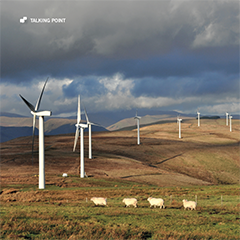High-quality wind resource data is essential for investors and developers looking to guarantee the accuracy of financial modelling – all the more so as the decline in subsidy tariffs, both in the UK and further afield, leave little margin for error. When it comes to guaranteeing the accuracy of this data, industry conversations have typically focused on whether meteorological (met) masts or remote sensing devices will win out as the technology of choice for undertaking wind resource assessment campaigns.
But, while each possesses certain strengths and weaknesses, developers should be conscious of a number of other site and project considerations during early-stage site prospecting that, if addressed early on, can reduce costs and maximise a project’s financial returns over its lifetime.
Unfortunately, all too often investors make the decision to use either a met mast or remote sensing unit, whether LiDAR (light detection and ranging) or SoDAR (sonic detection and ranging) in isolation, with little understanding of the sites where this equipment will be deployed. This means that a range of factors, particularly around site conditions, planning issues and the unique circumstances of a specific project are overlooked. In turn, this will often result in increased and unnecessary costs, as well as having a negative impact on a project’s long-term profitability.
Most will be aware of the relative merits of met masts and remote sensing units. Met masts equipped with a range of measuring instruments, such as anemometers and wind vanes, have long been the industry standard for wind resource assessment. Available as either lattice or tilt-up tubular masts, they can reach up to 160m in height, while a healthy second-hand market means they can often seem the most cost-effective option – and one that, crucially, will provide bankable data suitable for project financing.
By contrast, remote sensing devices, whether light- or sound-based units, are the more recent market entrant but have rapidly made an impact with their innovative approach to wind resource assessment. LiDAR units emit a laser beam and then measure return electromagnetic radiation to assess wind speed and direction, while SoDAR similarly emits sound pulses before recording return signals to determine wind properties at a given site. Their key benefits include their versatility, an ability to be ground-based or mounted, and to measure at greater heights – up to 200m – than met masts. This is likely to become all the more important as wind turbines continue to increase in scale. For the time being, however, and for the purposes of project financing, met mast data continues to be commonly favoured over that of remote sensing units, which will often be deemed unbankable.





























